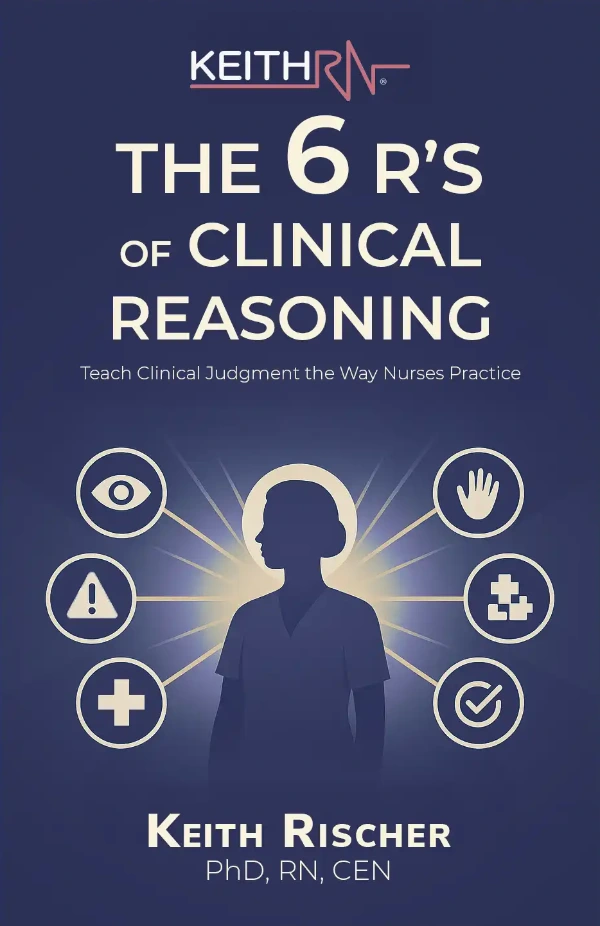
According to the Carnegie Foundation’s research led by Dr. Patricia Benner the traditional ways of teaching nursing do not adequately prepare students for clinical practice.
As a result, Benner and her co-authors recommended that nursing education not only needs to change, it must be radically transformed by contextualizing content to the bedside, integrating clinical and classroom teaching, and emphasizing clinical reasoning (Benner, Sutphen, Leonard, & Day, 2010).
These findings were published in Educating Nurses: A Call for Radical Transformation in 2010.
Has progress been made to change? What is the current state of nursing education seven years later?
Much change has taken place on a large scale and many programs have responded to implement innovative change!
I wanted to also get a perspective of what everyday educators in the trenches of academia see so I conducted a survey of my audience and received over 340 responses from educators across the country.
Though there were encouraging findings, there were also struggles.
By identifying current challenges, this makes it possible to develop a plan to overcome current barriers so that needed change and improvement in the quality of nursing education can continue.
The Survey Says…
When asked if faculty felt that needed change and transformation had been realized in their program:
- 66% felt that change is taking place, but still an ongoing work in progress.
- 14% replied that all hands were on deck and working together.
- 12% replied that the traditional status quo continues to prevail
- 8% shared varied reponses of success.
I was encouraged that in the majority of programs (80%) change was being realized at some level though the degree of this change was not able to be ascertained.
The final question of the survey was the most important:
What do you think is the biggest CURRENT barrier(s) to radically transform nursing education?
The struggle to bring needed change to nursing education can be summarized as:
- Struggles with students
- Faculty struggles
- System barriers in nursing education
Based on the number of responses received with each category, what do you think was the biggest struggle?
Faculty challenges.
Faculty Struggles
Being a nurse educator is hard and I believe more challenging and demanding than clinical practice!
Unlike clinical practice, being an educator never leaves you. There are numerous platters faculty are continually spinning and just to keep them spinning without crashing is the best that you can hope for some days!
The current lived reality that are barriers to change included:
- Not enough time
- Not enough energy
- Too much content
- Overworked with current demands
- Fear of change
- Faculty resistance to change and doing things differently
- Lack of motivation/unwillingness to change with older faculty
- Lack of education to do things differently
- Focus on NCLEX® test scores/preparation
Comments from faculty that captured these challenges included:
- Too much content in so little time.
- Instructors don’t know how to “flip the classroom”
- Faculty that have a hard time changing the way they have been teaching for many years.
- Instructors focusing on doing things “their way”, “ain’t broke, not fixing it”, teaching in silos.
- Faculty unwilling to change and students who do not realize that change needs to happen. We are a very successful program but that does not mean we need to change. Our success is a barrier to being even better than we are!
- Faculty buy in. Student push back.
- Myself. I was taught in the traditional manner and trying to find alternate methods of teaching is most difficult for me; however I want to change. So I am the barrier!
Student Struggles
Though about 80% of the responses identified varying faculty struggles as barriers to change, there were numerous themes related to students that are relevant and need to be addressed.
Themes of student challenges included:
- Student resistance to active learning
- Students who expect to be spoon fed and not take responsibility for learning
- Student buy-in to do things differently
- Fear of student reaction and impact on faculty evaluation
- Students who want to be taught traditional lecture and do not want to learn to critically think.
Comments from faculty that captured these challenges included:
- Students thinking it really isn’t “teaching”. They want notes, notes, notes
- Students who want to be spoon fed! They do not always like it when we encourage them to think like a nurse.
- Student’s expectation that the faculty will TEACH THEM what they need to know. I find it most challenging to get THEM to do the THINKING/LEARNING
- Student attention span of 7 seconds. If the lesson does not involve digital information (i.e. their phone, tablet, or laptop) their attention is minimal.
Why Overcome?
If you are facing any of these similar challenges, you are not alone.
Identifying the ongoing challenges in your program is only the beginning of the battle, it is now time to OVERCOME them!
What is the consequence if the status quo or ongoing barriers continue?
Students will not be PREPARED for PRACTICE after graduation.
This not only impacts the student, but outcomes of patients they will care for if they are unable to USE/APPLY knowledge and clinically reason to THINK more like a nurse!
ACTION Steps
I want to encourage you to muster all the energy and strength to get over heartbreak hill if it exists in your program and consider the following action steps to begin to move the transformational ball forward in your program.
- Work together. Nursing education is hard. Implementing needed change is even harder, but it can be done! Get out of any “silos” and work together. Solomon, the wisest man of ancient history speaks to nurse educators today: Two can accomplish more than twice as much as one, for the results can be much better. If one falls, the other pulls him up; but if a man falls when he is alone, he’s in trouble (Ecclesiastes 4:9-10).
- Educate yourself on educational best practice. Knowledge is power. Start with reading Educating Nurses. I have a book coming out out later this Spring/Summer titled TEACH Students to THINK Like a Nurse that will be chock full of practical strategies to integrate clinical reasoning in the class and clinical settings.
- Take that FIRST STEP. A journey of a thousand miles begins with that all important FIRST STEP. Once you have a sense of where you are going, step out and implement relevant active learning that is educational best practice. I am a partner with you on this journey. This is the reason I developed clinical reasoning tools and case studies so that educators can quickly implement needed change with no drain on your limited time.
In Closing
Though many nurse educators have heard the call to respond and do what is needed to strengthen student learning, challenges remain.
Take responsibility for what you can change in your program…YOU!
Identify challenges that you can directly influence. Do what is needed to work together with colleagues to support and broaden the scope of needed change.
Then take those first steps to do what is best, despite your fears. Tweak as needed, but determine that you are not going back to the comfort and security of the past ways of doing things because too much is at stake.
Never lose sight that the primary objective of a nurse educator is to emphasize applicatation and the thinking so that students are safe and well prepared for professional practice after the NCLEX®!
What do you think?
What struggles do you face in your program? What have you done to overcome them?
Comment below and let the conversation begin!
RELEVANT Past Blogs
The following past blogs provide additional background and learning on todays topic!
- Face Your Fears: How to Overcome Barriers to Transformation
- How to Teach Clinical Reasoning so Students Can Think More Like a Nurse
- Why Educators Must Prepare Students for Practice NOT just the NCLEX®
Next Weeks Blog…
Todays blog emphasized the current challenges, but the more important question that must be answered is WHY do these challenges persist and how do educators need to THINK differently to be part of the needed change.
Don’t miss it!
References
- Benner, P., Sutphen, M., Leonard, V., & Day, L. (2010). Educating nurses: A call for radical transformation. San Francisco, CA: Jossey-Bass.
Keith Rischer – PhD, RN, CEN
As a nurse with over 35 years of experience who remained in practice as an educator, I’ve witnessed the gap between how nursing is taught and how it is practiced, and I decided to do something about it! Read more…
The Ultimate Solution to Develop Clinical Judgment Skills
KeithRN’s Think Like a Nurse Membership
Access exclusive active learning resources for faculty and students, including KeithRN Case Studies, making it your go-to resource.




